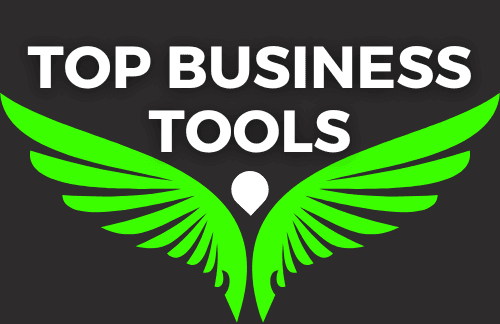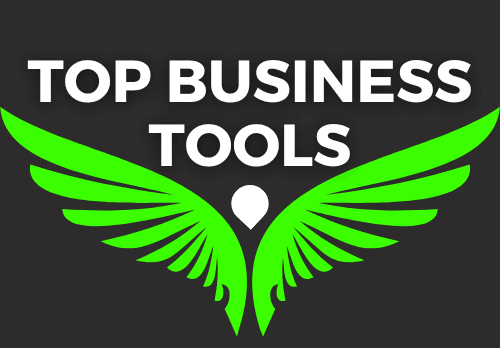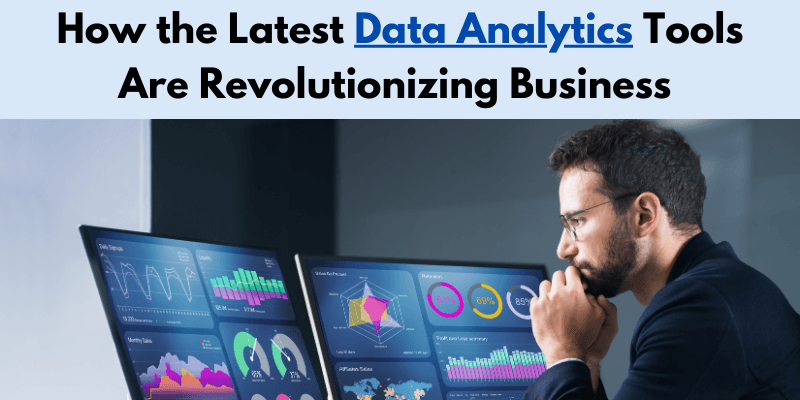In 2024, the data analytics landscape is undergoing a transformation driven by several key trends that are reshaping how organizations collect, process, and utilize data. In today’s fast-paced business environment, having the right tools at your disposal is essential for achieving success.

Table of Contents
Latest Trends in Data Analytics
Here are some of the most prominent emerging trends shaping the field:
1. Edge Computing and Analytics
This is becoming a key component in industries where real-time data processing is crucial, such as healthcare and manufacturing. Edge analytics processes data directly at the source, reducing the amount of unnecessary data sent to the cloud, which not only saves bandwidth but also enhances privacy and security.

Companies are increasingly focusing on making data accessible to all employees, not just technical teams. This trend, powered by AI and easy-to-use data visualization tools like Tableau and Power BI, allows non-technical staff to make data-driven decisions, improving overall business efficiency.

3. Data-as-a-Service (DaaS)
With the rapid rise in cloud-based data solutions, DaaS allows companies to access data without needing extensive in-house infrastructure. This trend is particularly beneficial for small and medium-sized enterprises, reducing the need for hiring large tech teams and enabling them to scale faster by outsourcing data management.
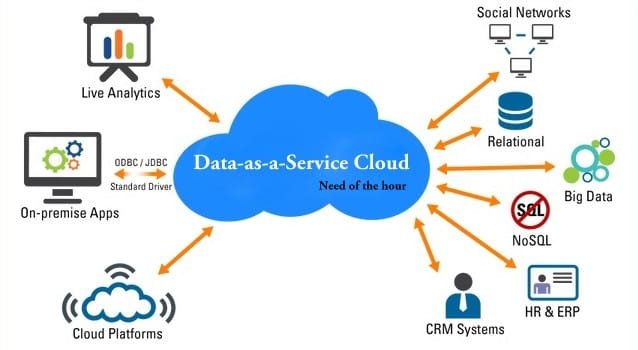
4. Data Unification
Many businesses are working to break down data silos by unifying data from different departments into a single source. This trend is critical as businesses aim to maximize the value of their data for better decision-making.

These trends are enhancing efficiency, security, and scalability in data analytics, making it more accessible and valuable for businesses across diverse industries. Now, let’s explore how data unification is transforming the data analytics landscape:
How Data Unification Drives Business Growth
Data Unification is the process of bringing together data from various sources into a single, consistent, and trustworthy format. In most organizations, data is often stored across different departments or systems, leading to data silos where information is fragmented and inaccessible to other teams. This creates inefficiencies, as teams may make decisions based on incomplete data, or spend excessive time manually consolidating information.
Importance of Data Unification
- Better Decision-Making: Unified data enables more accurate analysis, giving businesses a comprehensive view of their operations. By breaking down silos, companies can see connections between different data sets, leading to more insightful decision-making.
- Improved Efficiency: With unified data, teams don’t waste time searching for information in disparate systems. This leads to faster reporting and more agile operations.
- Consistency: A single source of truth ensures that everyone in the organization is working with the same data, which reduces errors and discrepancies between reports.
- Scalability: As businesses grow, the need for unified data increases to manage complex operations efficiently.
How a Tool like Databox Can Help with Data Unification
Databox is a business analytics platform designed to unify data from various sources into a single dashboard.
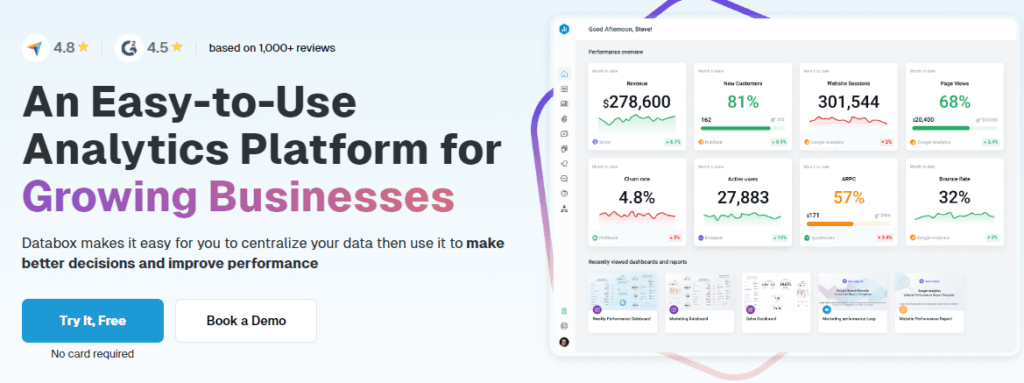
Here’s how Databox contributes to data unification:
- Centralized Data Dashboard: Databox connects to multiple data sources, such as CRMs, marketing tools, financial software, and databases, and consolidates the data in one place. This gives teams a unified view of their key metrics without needing to jump between different platforms.
- Automated Data Integration: Databox integrates with over 70 data sources, including Google Analytics, HubSpot, and Salesforce. It can pull data automatically and in real-time, ensuring that the unified data is always up-to-date.
- Cross-Departmental Insights: By unifying data from different departments (e.g., marketing, sales, and finance), Databox allows teams to identify correlations and trends that may not have been visible before. This leads to better collaboration across departments.
- Customizable Dashboards and Reporting: Databox enables users to create tailored dashboards that reflect the specific needs of different teams. For instance, marketing may focus on campaign performance, while finance might prioritize revenue tracking, but both dashboards can pull data from the same unified sources.
- Real-Time Monitoring and Alerts: It provides real-time monitoring of data across platforms, so businesses can respond to trends or issues as they occur. This enhances decision-making by providing access to real-time unified data.
By using Databox, companies can streamline their data management process, reduce data silos, and ensure that all teams are aligned with the same, accurate information. This ability to unify and visualize data in one dashboard helps businesses stay agile and make faster, more informed decisions, which is critical in today’s data-driven environment.
Real-World Success Stories: How Databox Drives Business Growth Through Improved Data Management and Decision-Making
1. Agency Analytics
A digital marketing agency, Salted Stone, used Databox to unify and automate data from various platforms, such as Google Analytics, HubSpot, and SEMrush. Before adopting Databox, the team spent hours manually compiling reports for their clients. After implementation, the agency saw:
- 50% reduction in reporting time.
- Better visibility into campaign performance, enabling real-time adjustments.
- More productive client meetings, as data was readily available and visualized clearly.
As a result, the agency could focus more on strategy and deliver higher value to their clients, which led to increased client retention and acquisition.

2. SaaS Business Optimization
PandaDoc, a SaaS company, struggled with fragmented data across marketing, sales, and customer success teams. By using Databox, PandaDoc unified all their key metrics into a single dashboard. This allowed their teams to:
- Monitor performance in real-time, making data-driven decisions faster.
- Identify bottlenecks in the sales pipeline and optimize their approach, leading to a 40% increase in conversion rates.
- Improve collaboration across departments, as they all had access to the same up-to-date information.

3. Retail Sector
An online retailer used Databox to track and visualize performance across different sales channels, including Shopify, Facebook Ads, and Google Ads. By unifying their data, the retailer:
- Increased revenue by 25% within six months by optimizing underperforming channels.
- Gained clear insights into which products were most profitable, enabling them to focus their marketing spend more effectively.
- Improved decision-making by having all key performance indicators (KPIs) available in one dashboard, leading to more agile business operations.
4. Healthcare Industry
A healthcare consulting firm used Databox to centralize data from multiple hospitals and healthcare providers. With unified data, the firm was able to:
- Reduce patient wait times by identifying inefficiencies in the healthcare delivery process.
- Improve overall service quality by tracking performance metrics across different providers.
- Empower management with real-time data, leading to quicker decision-making and improved patient outcomes.
These examples illustrate how Databox helps businesses across various industries not only unify their data but also leverage it to improve performance, drive growth, and increase efficiency
Conclusion
In conclusion, data unification is a critical trend in 2024 that empowers businesses to leverage insights from multiple sources, streamline decision-making, and drive growth. Tools like Databox are at the forefront of this transformation, offering powerful solutions that automate data integration and provide real-time insights. By unifying data, businesses can operate more efficiently, collaborate across departments, and make more informed decisions that directly impact their success. As the demand for data-driven strategies continues to rise, adopting the latest data analytics tools becomes a vital step for any company looking to thrive in today’s competitive landscape.
Don’t miss out on the opportunity to optimize your performance and streamline your operations. Try Databox today and experience the transformation it can bring to your data-driven strategies!
